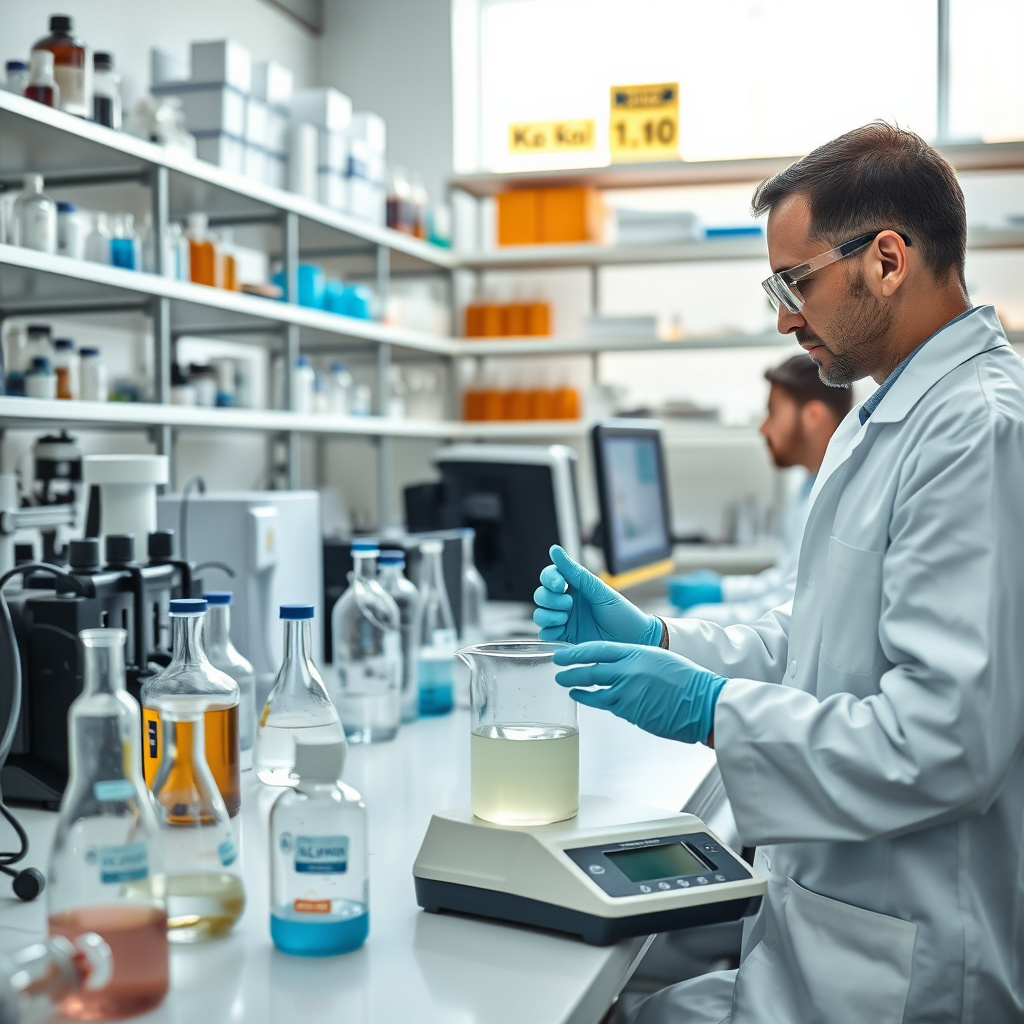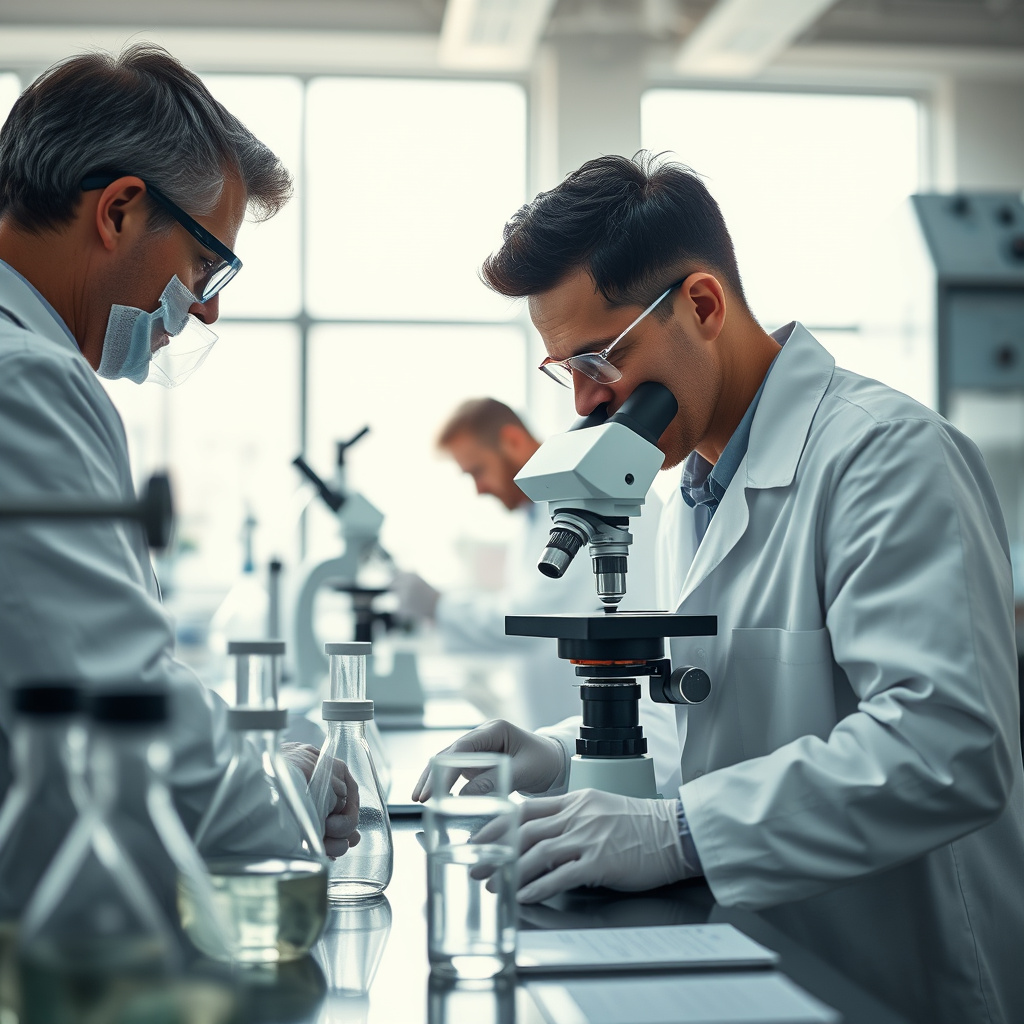How to ensure the purity of glycerin for pharmaceutical use? This involves rigorous testing and quality control measures to meet industry standards.
How to guarantee the purity of glycerin for pharmaceutical use?
In this post, we’ll explore vital strategies and best practices that can help you, as a manufacturer or supplier, ensure that your glycerin meets the highest purity standards.
By understanding the processes involved, you will be better equipped to select the right glycerin source, conduct necessary tests, and maintain compliance with pharmaceutical regulations.
Get ready to delve into the essential steps that can protect your business and enhance your product quality!
The Importance of Glycerin Purity in Pharmaceuticals
In the pharmaceutical industry, the role of raw materials is paramount, and among these, Glicerina Farmacêutica holds a significant position. Glycerin, known for its versatility, is utilized in various applications, ranging from formulations of creams and ointments to acting as a solvent in liquid medications. However, the purity of glycerin is crucial, as impurities can compromise the safety and efficacy of pharmaceutical products.
Understanding Glycerin and Its Purity
Glycerin, a colorless and odorless liquid, is derived from both natural and synthetic sources. It is essential for manufacturers to source high-quality glycerin to meet stringent regulatory standards. The purity of glycerin is defined by the absence of contaminants that could lead to adverse reactions in patients. This is particularly important when considering the delicate nature of pharmaceutical formulations.
Impact of Impurities on Pharmaceutical Products
- Impurities can lead to unexpected chemical reactions within formulations.
- They may cause skin irritation or allergic reactions when used in topical products.
- In oral medications, impurities can alter the absorption rates, affecting the drug’s effectiveness.
Given these potential issues, it is evident that ensuring glycerin purity is not just a regulatory requirement but a cornerstone of patient safety. Manufacturers must collaborate closely with reliable glycerin suppliers who prioritize quality and transparency in their sourcing processes.
Best Practices for Ensuring Glycerin Purity
To guarantee the purity of glycerin, manufacturers should adopt several best practices:
- Vendor Evaluation: Partnering with reputable glycerin sourcing companies is essential. These companies should provide certificates of analysis that confirm the purity levels of their glycerin.
- Quality Control Testing: Implementing rigorous testing protocols to assess glycerin’s purity before use can help identify any contaminants early.
- Regular Audits: Conducting audits of glycerin suppliers promotes accountability and ensures that quality standards are consistently met.
The Future of Glycerin in Pharmaceuticals
As the demand for pharmaceutical products continues to grow, the sourcing of high-quality glycerin will remain a focal point for manufacturers. Trends indicate that more companies will seek to buy glycerin wholesale to optimize their supply chains while ensuring product integrity. This shift underscores the importance of transparency and quality in the glycerin production process, ultimately benefiting both manufacturers and consumers.
In the present landscape, the emphasis on Glicerina Farmacêutica purity is a testament to the industry’s commitment to safety and efficacy. By prioritizing high-quality glycerin, pharmaceutical companies can safeguard their formulations and, most importantly, the health of their patients.
Key Methods to Evaluate Glycerin Purity
When discussing the purity of glycerin, especially in the context of pharmaceutical applications, it’s essential to understand the various methods available for evaluation. Ensuring high-quality glycerin is vital, as impurities can affect both safety and efficacy. Here are some effective methods to assess glycerin purity.
1. Physical Inspection
The first step in evaluating glycerin purity often starts with a simple physical inspection. Observing the color and clarity can provide initial insights. High-purity glycerin should be colorless and transparent. Any discoloration or cloudiness may indicate the presence of impurities.
2. Refractive Index Measurement
Another common method is measuring the refractive index. This technique involves using a refractometer to determine how light bends when passing through the glycerin. Each grade of glycerin has a specific refractive index range. Comparing the measured value against known standards can help identify purity levels effectively.
3. Density Assessment
Density is a critical parameter in evaluating glycerin quality. By using a hydrometer, one can measure the density of the glycerin sample. Pure glycerin typically has a density of about 1.26 g/cm³ at 20°C. Deviations from this value can indicate impurities or lower-quality glycerin.
4. High-Performance Liquid Chromatography (HPLC)
For more precise analysis, High-Performance Liquid Chromatography (HPLC) is a powerful tool. This method separates and quantifies components within the glycerin sample. It can detect the presence of various impurities, providing a clear picture of glycerin’s composition. Many glycerin manufacturers and glycerin suppliers utilize this method to ensure their products meet pharmaceutical standards.
5. Gas Chromatography (GC)
Gas Chromatography (GC) is another analytical method that can be employed, particularly for volatile impurities. This technique separates the components of a mixture based on their volatility. By analyzing the resulting data, it’s possible to identify and quantify unwanted substances that may compromise glycerin purity.
6. Infrared Spectroscopy
Infrared spectroscopy provides a non-destructive way to analyze glycerin. By examining the absorption of infrared light, one can identify the molecular structure of glycerin and detect potential contaminants. This method is highly effective for identifying specific functional groups and ensuring compliance with Glicerina Farmacêutica standards.
7. pH Testing
Testing the pH of glycerin can also reveal important information about its purity. Pure glycerin should have a neutral pH around 7. Significant deviations may suggest contamination or degradation, prompting further investigation into the glycerin sourcing companies involved.
8. Sensory Evaluation
Lastly, sensory evaluation, although subjective, can be useful. A trained panel can assess the odor and taste of glycerin. Pure glycerin should have a mild, sweet taste and no off-putting odors. This method is often used as a preliminary assessment before more rigorous testing.
Conclusion
In the present landscape of pharmaceutical manufacturing, ensuring the purity of glycerin is crucial. By employing these evaluation methods, companies can confidently source and utilize high-quality glycerin for their formulations. Whether you are looking to buy glycerin wholesale or exploring bulk glycerin for sale, understanding these evaluation techniques will help ensure that the glycerin meets the stringent requirements of pharmaceutical applications.
Understanding Glycerin Sources: Natural vs Synthetic
When delving into the world of glycerin, it’s essential to understand the differences between natural and synthetic sources. Glycerin, also known as glycerol, is a versatile compound widely used in various industries, particularly in pharmaceuticals. The source of glycerin plays a crucial role in determining its quality and purity, especially when it comes to applications in the pharmaceutical field.
Natural Glycerin Sources
Natural glycerin is typically derived from plant oils and animal fats. Common sources include vegetable oils such as palm, soy, and coconut oil. During the glycerin production process, these oils undergo saponification, which separates glycerin from fatty acids. This method results in a product that is often considered more desirable for pharmaceutical applications due to its organic origins and minimal processing.
- Vegetable Glycerin Supplier: Suppliers who focus on vegetable glycerin often highlight the benefits of sourcing from organic plants, appealing to consumers and manufacturers looking for natural options.
- High-Quality Glycerin: Natural glycerin is generally perceived as high-quality due to its purity and the absence of synthetic additives.
Synthetic Glycerin Sources
On the other hand, synthetic glycerin is produced through chemical processes, often derived from petroleum products or through the fermentation of sugars. While synthetic glycerin can be produced at a lower cost, there are growing concerns about its long-term safety and the presence of contaminants that may not be eliminated during production. This raises questions about the suitability of synthetic glycerin for sensitive applications like pharmaceuticals.
- Glycerin Sourcing Companies: When considering synthetic options, it’s important to choose reputable sourcing companies that adhere to strict quality controls to ensure the final product is safe for use.
- Glycerin Pricing Trends: Synthetic glycerin may offer more competitive pricing, but this can vary based on market demands and the source of the raw materials.
In the context of Glicerina Farmacêutica, the choice between natural and synthetic sources is critical. Pharmaceutical manufacturers must ensure that the glycerin they use meets rigorous standards for purity to guarantee safety and efficacy in their products. This decision is not just about cost; it’s about the integrity of the medications that rely on glycerin as a key ingredient. Understanding these sources allows companies to make informed decisions about their glycerin suppliers, whether buying in bulk or sourcing for specific applications.
Best Practices for Glycerin Suppliers
Ensuring the highest standards in the supply of glycerin is crucial, particularly when it comes to applications in pharmaceuticals. Suppliers must adopt best practices that not only focus on the quality of the product but also on the processes involved in its sourcing and distribution. A strong commitment to purity and safety is essential for any glycerin supplier aiming to serve the pharmaceutical industry effectively.
Maintaining High Standards of Quality
One of the primary responsibilities of a glycerin supplier is to maintain the highest quality standards throughout the glycerin production process. This involves rigorous quality control measures that track the purity of glycerin at every stage, from sourcing raw materials to the final product. Suppliers should conduct regular testing and analysis to ensure that their glycerin meets the stringent requirements set forth by regulatory bodies. Regular audits and compliance checks can help suppliers ensure they are consistently delivering glycerin farmacêutica that meets or exceeds industry standards.
Transparent Sourcing Practices
Transparency in sourcing practices is another best practice that can significantly enhance the credibility of glycerin suppliers. Understanding the origins of glycerin—whether it is derived from natural or synthetic sources—can impact its purity and efficacy in pharmaceutical applications. Suppliers should provide clear information regarding their sourcing methods and the quality of glycerin they offer. This transparency not only builds trust with clients but also allows pharmaceutical companies to make informed decisions when they buy glycerin wholesale.
Effective Communication with Clients
Effective communication is vital for glycerin suppliers. Keeping clients informed about glycerin pricing trends, availability, and any changes in regulations can help build long-term relationships. Suppliers should also be proactive in educating clients about the various uses of glycerin in industries beyond pharmaceuticals, enhancing their overall value proposition. By sharing knowledge about the benefits and applications of high-quality glycerin, suppliers can position themselves as trusted partners in their clients’ success.
Investing in Continuous Improvement
In the ever-evolving landscape of the glycerin market, suppliers must invest in continuous improvement. Staying updated on the latest developments in glycerin production technology and best practices can help suppliers maintain a competitive edge. This might include adopting innovative manufacturing techniques or exploring new sources of raw materials to enhance the purity and quality of glycerin. Suppliers who prioritize innovation are better equipped to meet the changing demands of the pharmaceutical industry.
Building Strong Relationships with Glycerin Sourcing Companies
Establishing strong relationships with glycerin sourcing companies is essential for ensuring a consistent supply of high-quality glycerin. Collaborating closely with these partners enables suppliers to streamline their operations and enhance the reliability of their product offerings. This network can also foster shared learning and best practices that benefit all parties involved, ultimately leading to improved outcomes in glycerin quality and safety.
By focusing on these best practices, glycerin suppliers can not only ensure the purity and quality of their products but also position themselves as leaders in the pharmaceutical market. This commitment to excellence will help them thrive in a competitive landscape while contributing positively to the health and safety of consumers.
Regulatory Standards Impacting Glycerin Quality
In the complex world of pharmaceuticals, the quality of every ingredient is paramount. Among these, glycerin holds a vital position, particularly as it is often used as a solvent, sweetener, and preservative. Understanding the regulatory standards that govern glycerin quality is essential for manufacturers and suppliers alike. These regulations not only ensure the safety and efficacy of pharmaceutical products but also affect the sourcing and production processes of glycerin itself.
The Role of Regulatory Bodies
Regulatory bodies such as the FDA and EMA set stringent guidelines that dictate the acceptable levels of purity and contaminants in glycerin. These standards are designed to protect consumers and guarantee that the glycerin used in pharmaceuticals meets specific safety criteria. Compliance with these regulations is crucial for any glycerin manufacturer and is often a determining factor for pharmacies when they choose suppliers.
Quality Control and Testing
To adhere to regulatory standards, quality control measures are implemented throughout the glycerin production process. Regular testing for impurities and contaminants is essential. This includes evaluating the glycerin for heavy metals, microbial contamination, and other harmful substances. Reliable glycerin suppliers will often provide certificates of analysis to demonstrate their products meet the required standards, ensuring that pharmaceutical companies can confidently use their glycerin in formulations.
Impact of Sourcing and Production Methods
The source of glycerin—whether natural or synthetic—can also impact its quality and compliance with regulations. Natural glycerin, derived from vegetable oils, may have different purity standards compared to its synthetic counterpart. As the demand for high-quality glycerin increases, suppliers are focusing on sustainable sourcing practices. This shift not only aligns with regulatory expectations but also resonates with the growing consumer preference for environmentally friendly products.
Market Trends and Supplier Selection
As the market for glycerin expands, understanding current trends in glycerin pricing and availability becomes vital. Pharmaceutical companies looking to buy glycerin wholesale need to consider factors such as supplier reliability and adherence to quality standards. Engaging with glycerin sourcing companies that prioritize compliance can make a significant difference in ensuring the purity of glycerin used in their products.
In summary, the interplay of regulatory standards, quality control measures, and sourcing practices shapes the landscape of glycerin quality in pharmaceuticals. As the industry evolves, staying informed about these standards will help manufacturers and suppliers ensure that they provide the best possible products to their customers.
Future Trends in Glycerin Production and Purity Assurance
As the demand for high-quality glycerin continues to rise, especially in the pharmaceutical sector, it’s crucial to understand how the production process and purity assurances are evolving. Presently, manufacturers are focusing on innovative methods to enhance the quality and sustainability of glycerin while ensuring it meets the stringent requirements for pharmaceutical applications. This shift is driven by the increasing awareness of the importance of pharmaceutical glycerin purity and its impact on product safety and efficacy.
Advancements in Glycerin Production
Today’s glycerin production processes are becoming more sophisticated, incorporating advanced technologies such as biotechnology and sustainable sourcing practices. Many glycerin manufacturers are exploring enzymatic processes that can produce glycerin from renewable resources more efficiently. This not only improves yield but also reduces the environmental footprint associated with traditional methods.
Quality Assurance Protocols
Ensuring the purity of glycerin is paramount, especially in pharmaceuticals, where even minor impurities can have significant effects. In the current landscape, rigorous quality assurance protocols are being implemented by glycerin suppliers. These protocols include comprehensive testing for contaminants and adherence to regulatory standards, helping to ensure that the glycerin produced is of the highest quality. Techniques such as chromatography and spectroscopy are increasingly used to verify the purity levels of glycerin, offering a reliable way to assess its suitability for various applications.
Sourcing and Sustainability
The trend towards sourcing glycerin from sustainable and ethical suppliers is gaining traction. Many companies are now prioritizing partnerships with glycerin sourcing companies that emphasize eco-friendly practices. This shift not only supports environmental sustainability but also aligns with the growing consumer demand for transparency in product sourcing. As a result, suppliers are increasingly providing information about the origin of their glycerin, which is crucial for industries that rely on high-quality ingredients.
Market Dynamics and Pricing Trends
In the present market, the dynamics of glycerin pricing are influenced by several factors, including production costs, sourcing practices, and market demand. The trend toward buying glycerin wholesale is becoming more popular among manufacturers looking to secure better pricing and ensure a steady supply. Additionally, the growing use of glycerin across various industries, from pharmaceuticals to food production, is expected to affect its availability and pricing in the near future.
As we look to the future, the emphasis on high-quality glycerin and purity assurance will only intensify. Suppliers and manufacturers are expected to adapt continuously, embracing innovation and sustainability to meet the needs of an evolving market. By focusing on these aspects, the industry can ensure that pharmaceutical glycerin remains a reliable and effective component in healthcare and beyond.






